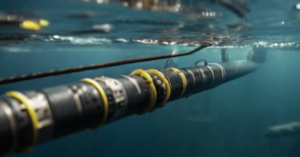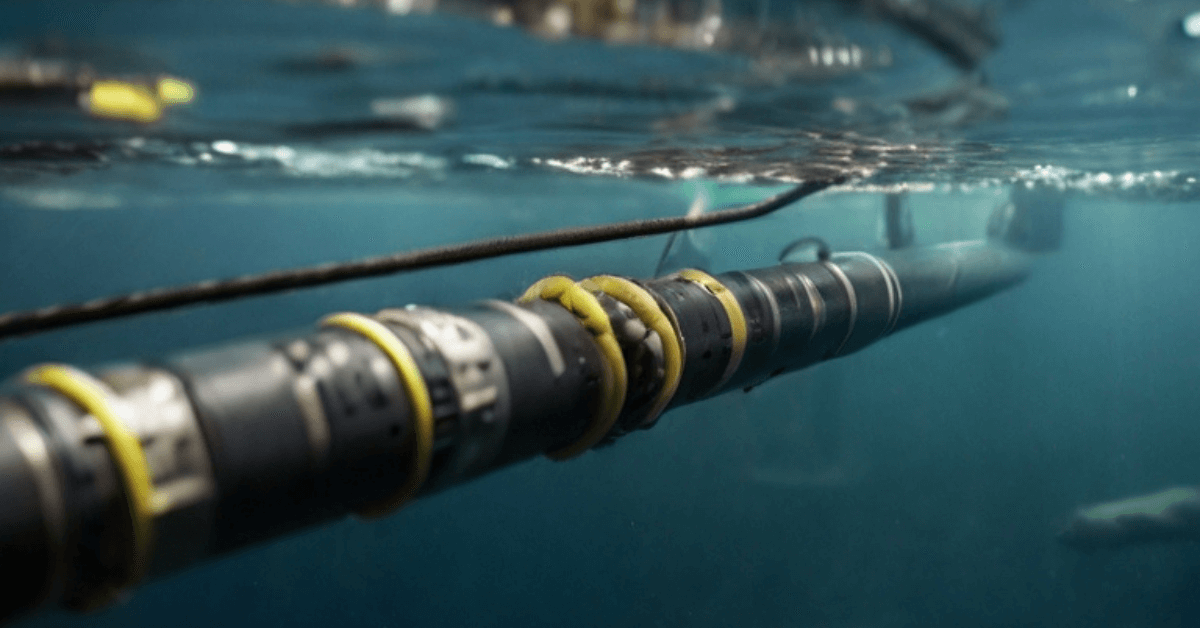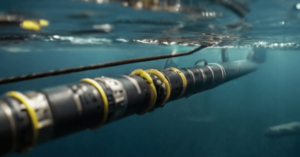
Philippines Stops South China Sea Survey After “Dangerous Harassment” By China
January 25, 2025
North Korea Test-Fires Cruise Missiles & Vows Tough Action Against U.S.
January 27, 2025

An undersea fibre optic cable connecting Latvia and Sweden was damaged on January 26, 2025.
The cable, linking the Latvian town of Ventspils with Sweden’s Gotland Island, was damaged in Sweden’s exclusive economic zone at a depth of over 50 meters.
Latvian Prime Minister Evika Silina described the damage as “significant” and likely caused by external factors.
After an extraordinary government meeting, she confirmed that Latvia was coordinating with NATO and Baltic Sea nations to clarify the circumstances surrounding the incident.
Latvia’s navy dispatched a patrol boat to investigate a vessel suspected of involvement, while two more ships in the area were also under investigation.
One of the vessels, the Malta-flagged bulk carrier Vezhen, was tracked near the damaged cable. MarineTraffic data revealed the Vezhen was closely followed by a Swedish Coast Guard vessel on Sunday evening as both headed toward the southern Swedish coastline.
While Latvian officials have not confirmed whether the Vezhen is under investigation, the Swedish Coast Guard declined to comment on its involvement, saying it was too early to provide details.
NATO has joined the investigation, with its ships and aircraft cooperating with Baltic Sea nations to assess the damage and, if necessary, take appropriate action.
Swedish Prime Minister Ulf Kristersson confirmed Sweden’s collaboration with Latvia and NATO, adding that Sweden would deploy its resources to support the investigation.
In response to growing threats to critical infrastructure in the region following a series of incidents involving damaged undersea cables, pipelines, and power lines, NATO has launched a mission called the “Baltic Sentry.”
The mission will increase the surveillance of ships in the Baltic Sea with the deployment of more drones, patrol aircraft and warships to protect crucial undersea cables.
The alliance has reserved the right to take action against any vessels seen as a threat to regional security. The Latvian State Radio and Television Centre (LVRTC), which operates the cable, has begun contracting a vessel to start repairs.
Although the exact cause of the damage remains unclear, the LVRTC said that it can only be determined once repairs start. Communication providers have already switched to alternative transmission routes to minimise the disruption.
Since Russia invaded Ukraine in 2022, the Baltic Sea has seen several incidents of damaged infrastructure.
Last month, Finnish police seized a Russian oil tanker suspected of damaging the Finnish-Estonian Estlink 2 power line and four telecom cables by dragging its anchor across the seabed.
In November 2023, the 745-mile C-Lion1 fibre optic cable connecting Finland to Germany was also damaged, with the authorities of both nations suspecting Russian sabotage.
European Commission President Ursula von der Leyen reiterated the union’s commitment to support the Baltic nations to address these challenges.
The LVRTC stated that while gas pipelines and power cables can take months to repair, damaged fibre optic cables in the Baltic Sea are typically restored within weeks.
The Swedish Navy and Coast Guard have also refrained from providing any more details. Spokesperson, Jimmie Adamsson said that it was too early to find out if the damage was intentional or caused by a technical fault.
References: Reuters, CNN
Source: Maritime Shipping News


